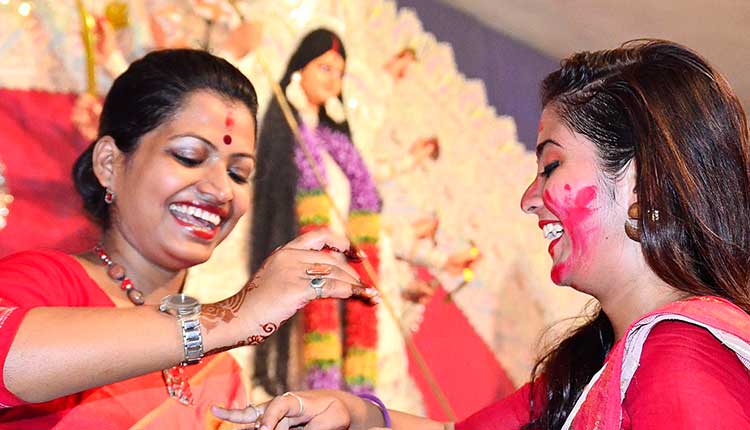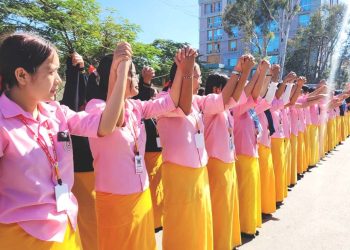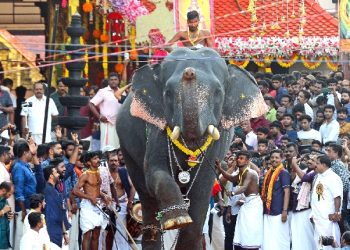Bhubaneswar: Durga Puja is celebrated with great pomp and pageantry in the whole country. People across the nation welcome Goddess Durga to her earthly abode on Sasthi(sixth day) and celebrate the victory over Mahishasura, the buffalo demon, depicting the triumph of good over evil on Vijaya Dashami (10th day).
In West Bengal, on the day of the Vijayadashami after the conclusion of the ritual worship, married Bengali Hindu women apply sindur on the forehead and feet of the goddess and offer sweets to her. Then they put sindur on each other’s faces and offer sweets to each other. This ritual is called ‘Sindur Khela’ literally meaning ‘vermillion game’.
Origin of Sindur Khela
Though the exact date and place of the tradition’s origin is still unknown, it is believed to have originated around 200 years ago during Durga Puja in West Bengal to ‘usher bonhomie among the housewives’. But some believe that this ritual is as old as Durga Puja itself. Nevertheless, it is one of the most important ritual s of Vijaya Dashami.
Contemporary ritual
On Vijaya Dashami, Visarjan Puja of the goddess is performed followed by Devi Baran, where married Hindu women bid farewell to the goddess. Dressed traditionally in white saris with red borders, each woman perform the final arati and then smear Sindur on the forehead and feet of the goddess. They also offer prasad and betel leaves.
Then starts the Sindur Khela among themselves where the women smear Sindur on each other’s foreheads, and shankha, pala and noa (the conch shell, coral and iron bangles) respectively, which are worn by the married Bengali Hindu women. The elderly women are also greeted by smearing Sindur on their feet.
Importance of Sindur Khela
The womenfolk staunchly believe that they would not be widowed if they follow the Sindur Khela ritual properly.
Sindur Khela symbolizes the power of womanhood in protecting her husband and children from all evil. Through the ritual of Sindur Khela, the Bengali Hindu women pray for long and happy married lives of each other. Family tiffs and petty quarrels between neighbours are settled through this ritual.
Criticism
The ritual has been criticized in the recent times for multiple reasons. The ritual has been criticized as non-inclusive in character because the participation in the ritual is strictly limited to married women only. But in recent times, there have been campaigns that called for participation of single women, widows, divorcees, transgenders, lesbians and sex workers in Sindur Khela.
This ritual has also been criticised for its over emphasis on the marital status of a woman, which critics feel could create a regressive impact on young unmarried women. Bengali Hindu girls grow up seeing the married ladies in their family participate in the playful ritual,and it might create among them a sense of life being incomplete without getting married.
The Calcutta Times campaign in 2017 revived the practice of just women – be it married, widowed, transgender individuals or women of the red-light area, to play with Sindoor to show that this is a universal bonding for all women, all sisters and not restricted only to married women.



















